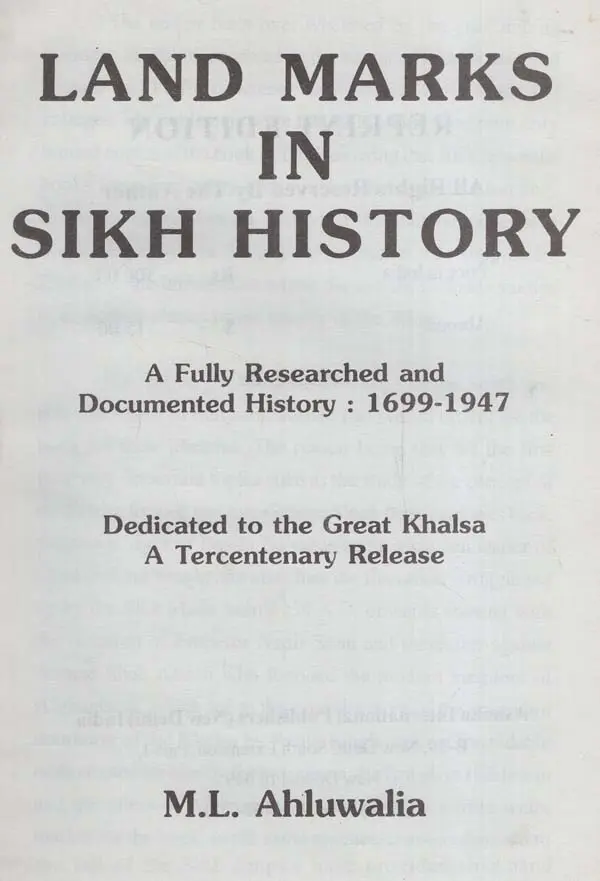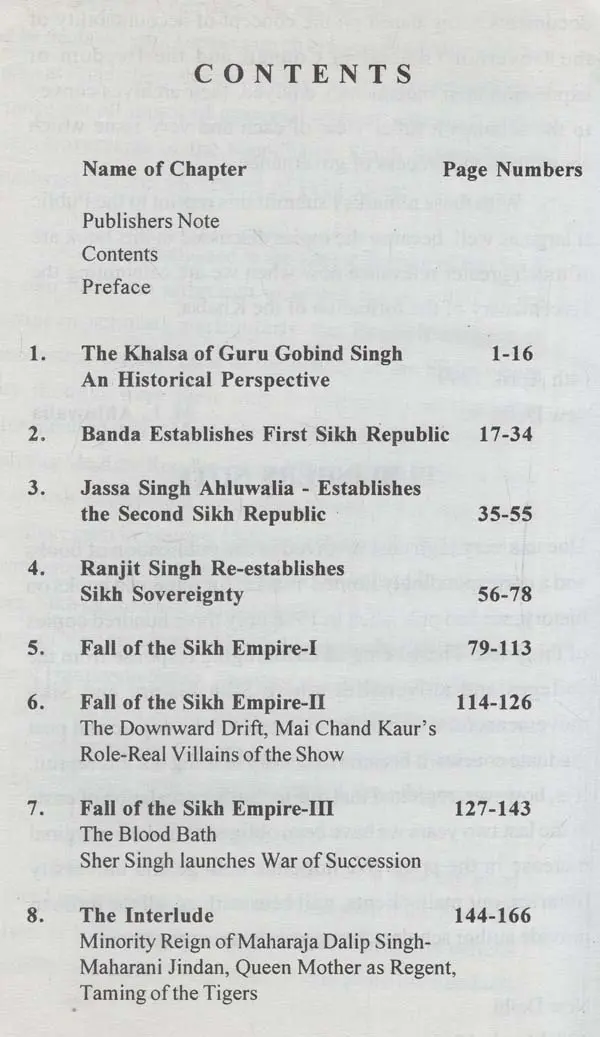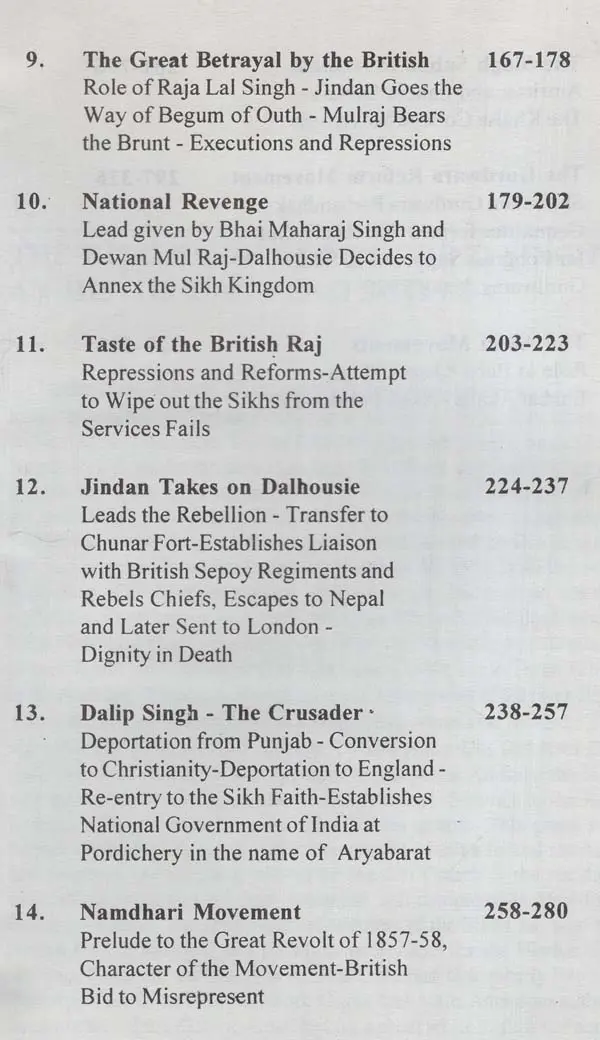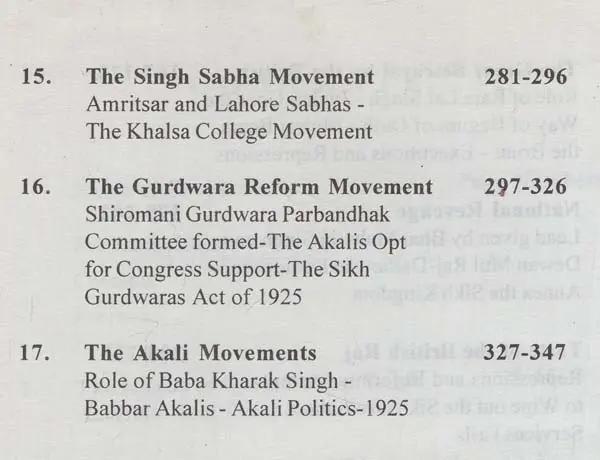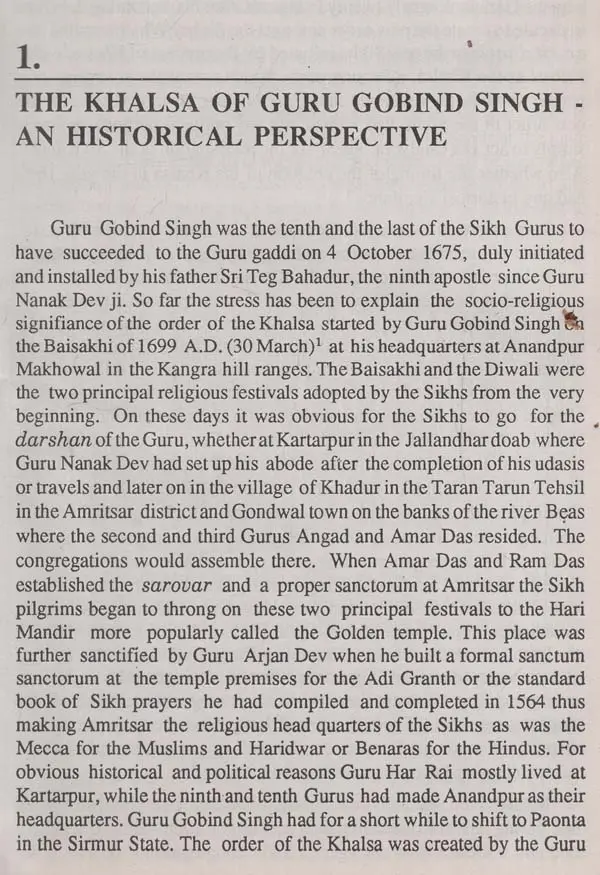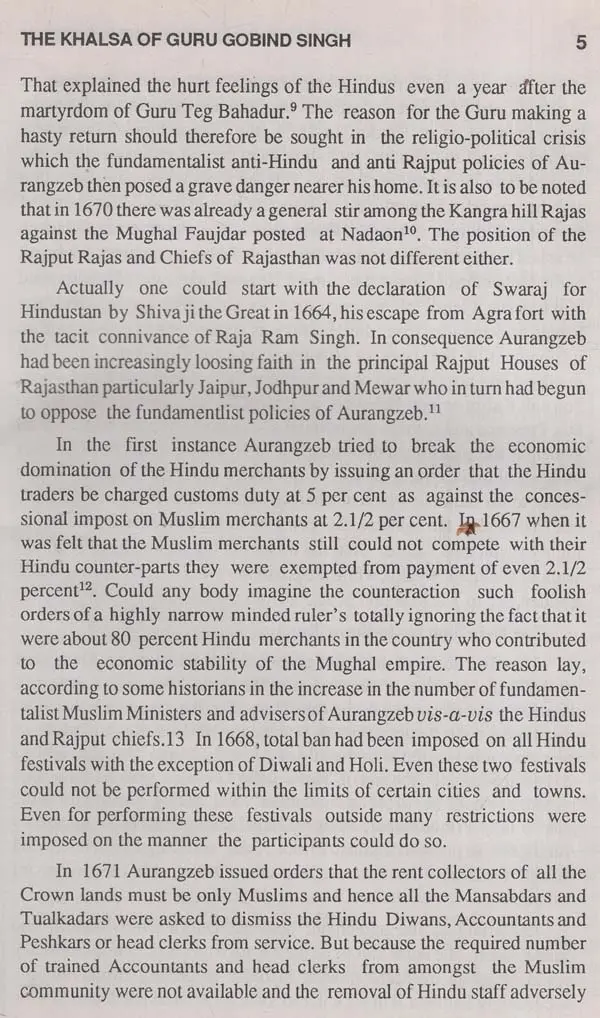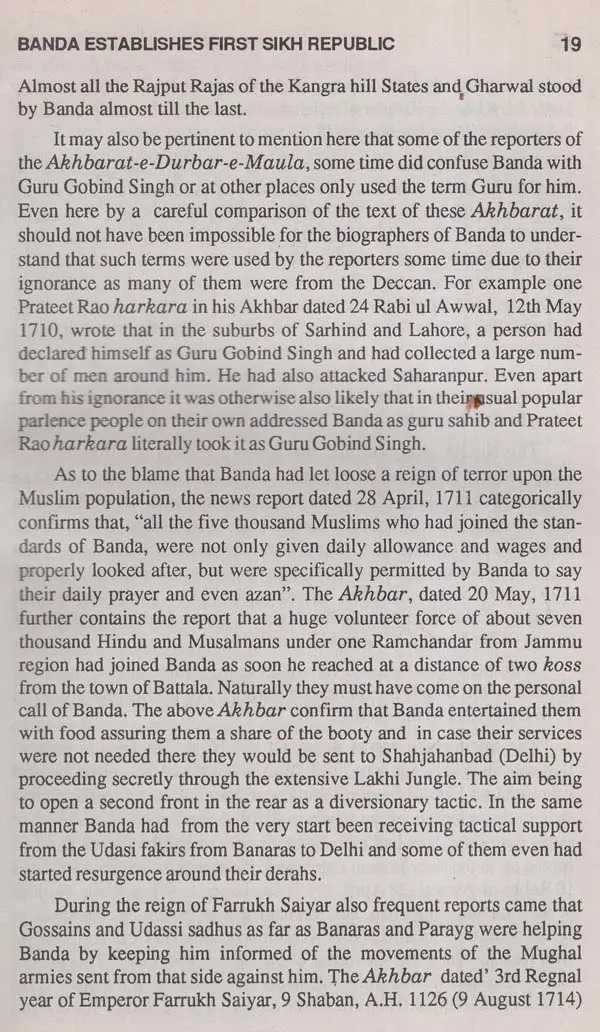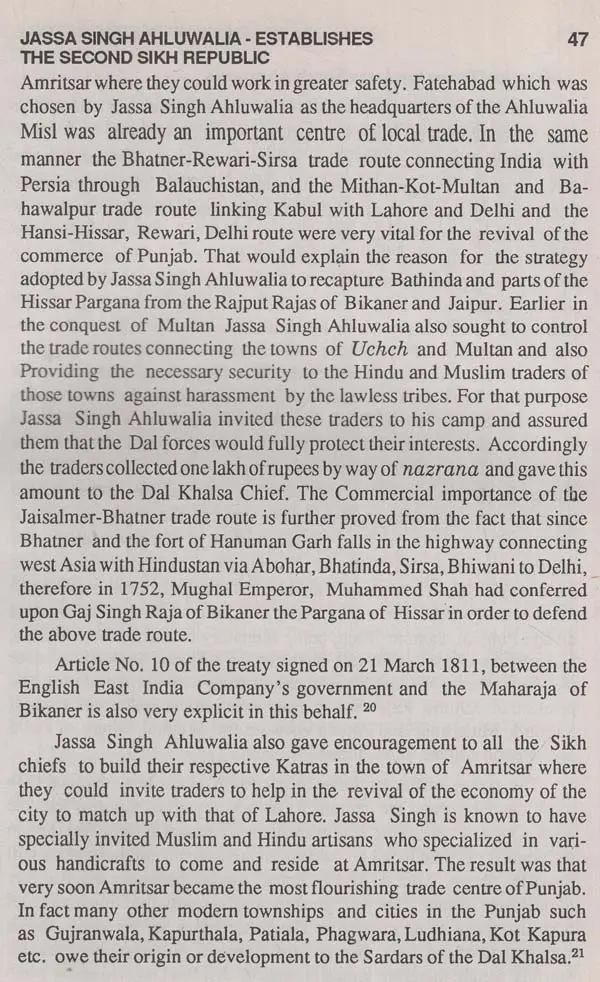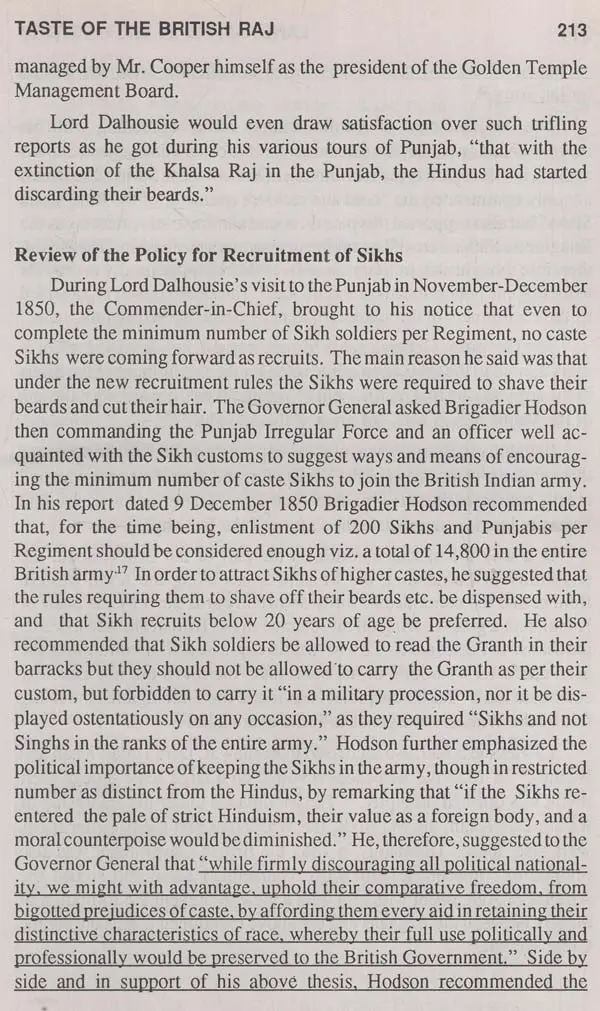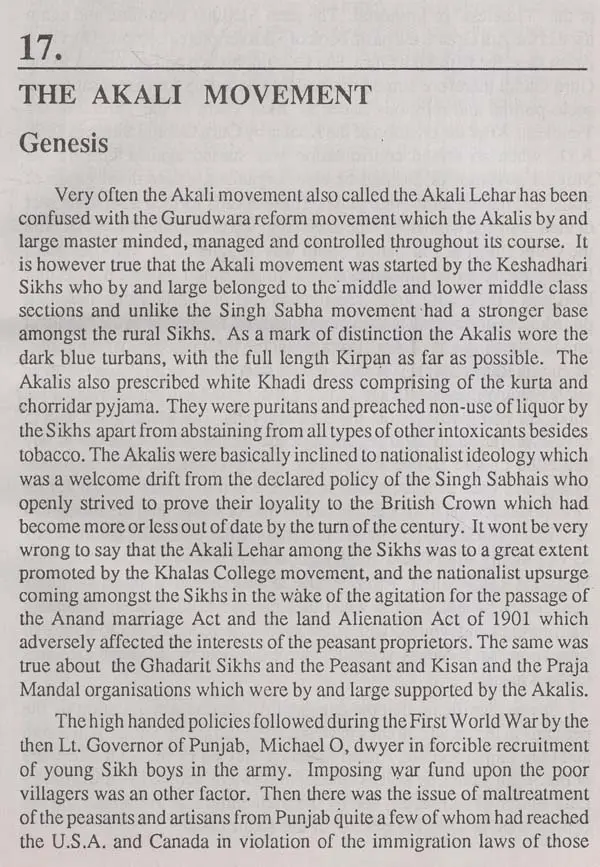
Land Marks in Sikh History- A Fully Researched and Documented History: 1699- 1947 Dedicated to Great Khalsa (An Old and Rare Book)
Book Specification
| Item Code: | UAZ725 |
| Author: | M. L. Ahluwalia |
| Publisher: | Ashoka International Publishers, New Delhi |
| Language: | English |
| Edition: | 1999 |
| Pages: | 348 |
| Cover: | HARDCOVER |
| Other Details | 8.80 X 5.80 inch |
| Weight | 500 gm |
Book Description
But inspite of that the universities in the and also elsewhere in India and abroad had placed orders for the book for their libraries. The reason being that for the first time very important topics such as the study of the concept of the Khalsa formed by Guru Gobind Singh three centuries back, the heroic fight of Banda Bahadur being a chosen leader of Guru Gobind Singh, and after him the liberation struggle put up by the Sikh Misls from 1739 A.D. onwards starting with the invasion of Emperor Nadir Shah and thereafter against Ahmad Shah Abdali who founded the modern kingdom of Afghanistan, which led to the establishment of the sovereign dominion of the Khalsa by Ranjit Singh, against formidable odds created for him by the two giants, the British in Hindustan and the rulers of Afghanistan in the west got a little wider market for the book. In the same manner, chapters devoted to the fall of the Sikh Empire have provided first hand information about the heroic role of Maharani Jindan, mother of the last ruler of the Sovereign Punjab, Maharaja Dalip Singh and the struggle be carried on for the liberation of "Aryabarat". as he declared while setting up an emigre government of free India at Pondichery then an enclave under the government of France are all topics of universal interest. like wise are the Sikh movements of the Namdharis. Singh Sabha and the Gurdwara Reform Movement of 1919-25 etc.
As I had mentioned in the earlier preface of this book my aim had been althrough to unveil the mischief of the European scholars particularly the English authors to misconstrue the real facts of the history of the Sikhs whom they thought were their only formidable enemies after extermination of the Maratha empire created by the energetic Peshwas Madhav Rao the 1st and IInd. For that aim in view the British government soon after exiling Baba Ram Singh Namdhari guru in January 1872, established the Singh Sabha movement in March 1872 itself with the help of loyalist Sikh rulers, Sikh jagirdars of Punjab and the Sikh priests who held charge of the important Sikh gurdwaras in Punjab including those of Harmandir Sahib, Amritsar and Anandpur Sahib. The sole aim of British in launching the Singh Sabha movement was to denegrade the Namdhari leaders as anti panthic and thereby indirectly weakening the urge of the Sikh masses to join the nationalist forces.
Book's Contents and Sample Pages
